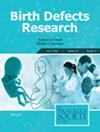In this study, JJH201501 was examined for reproductive toxicity during the perinatal period to support its safety as a novel serotonergic agent (5-HT) antidepressant. Pregnant Sprague–Dawley rats (F0, n = 24/group) were continuously exposed to 0 (control), 6, 18, and 60 mg/kg body weight/day of JJH201501 by intragastric administration from gestation day 15 to lactation day 21.
During this period, maternal toxicity was evaluated based on clinical signs, body weight, feed intake, delivery condition, litter parameters, and necropsy, with body weight, sex ratios, malformation incidence, physical, and neurodevelopmental assessments conducted on all offspring rats. Ten pups (male:female 1:1) from each dam within each dose group on postnatal day 4 (PND4) were randomly selected. One pair was evaluated for behavior evaluations (F1a) after PND35, one for reproduction performance (F1b) after 10 weeks, and three for organ weight and deformities (F1c) on PND35. After successful mating, F1b male rats were weighed and dissected to assess reproductive organ weight and sperm motility. Pregnant F1b rats were weighed and monitored for food intake twice weekly until laparotomy on GD14, which recorded live/dead fetuses, resorptions, implantations, corpora lutea, and uterine weight. Some statistical differences were found between the JJH-treated and control groups in maternal weight, food consumption, and F1 body weight and water maze performance.
Autopsy results showed that JJH201501 had a low cardiac index effect in F0, with no significant histopathological changes detected. Only one F1 offspring died in the high-dose group throughout the experiment. Due to the lack of dose-dependent effects and the consistent growth pattern of these alterations, the study findings do not suggest any toxicological significance for the observed results.
In conclusion, the no-observed-adverse-effect level of JJH201501 for perinatal rats is about 60 mg/kg b.w./day.


